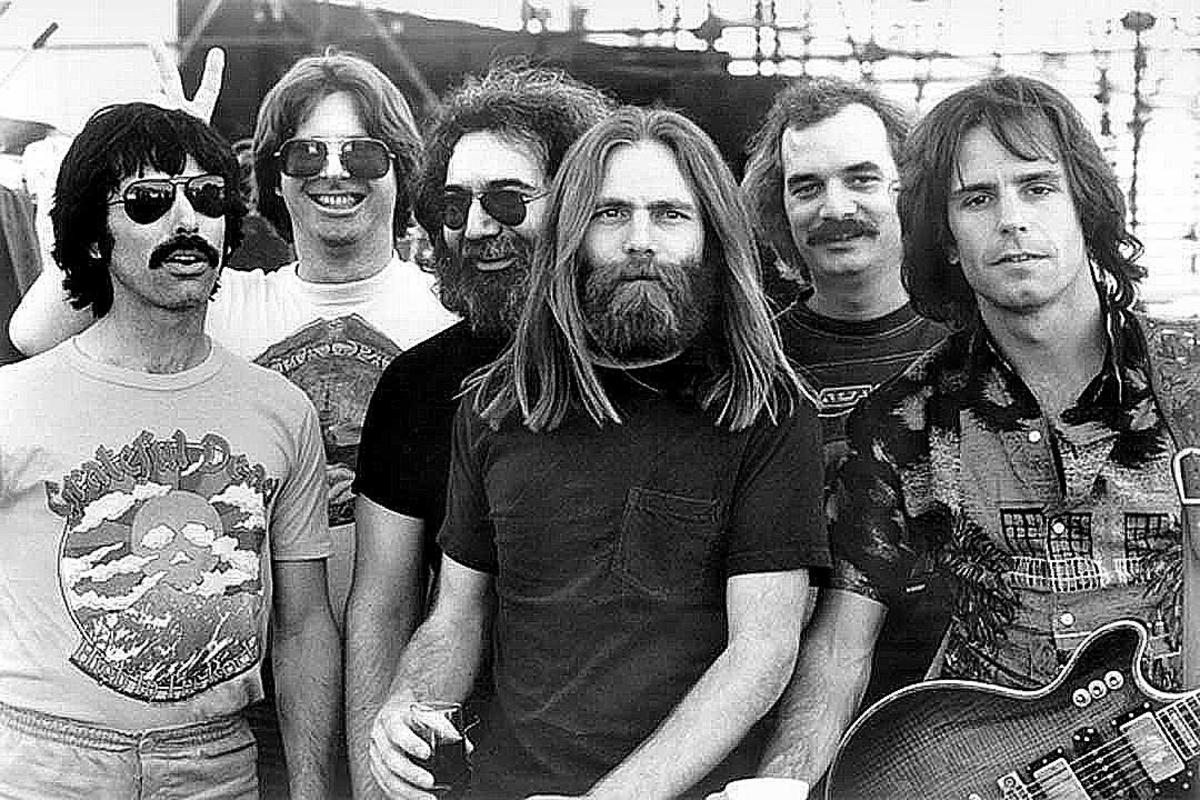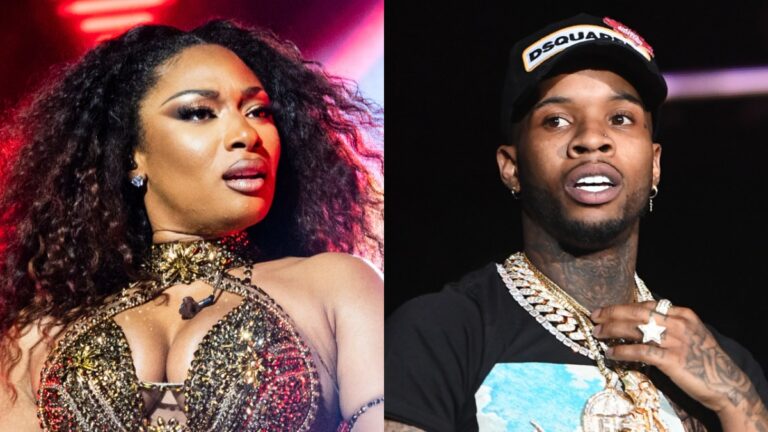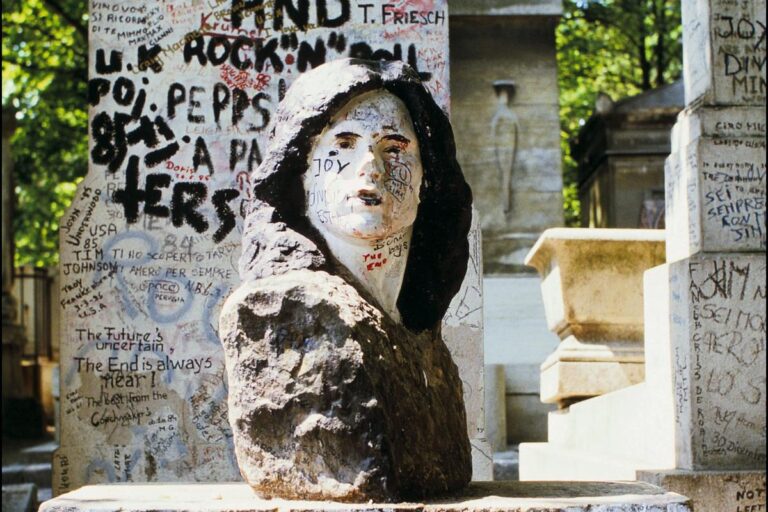What a long strange trip the Grateful Dead has been on for six decades.
In 2025, the Dead will celebrate their 60th anniversary, a huge milestone in a career marked with both triumph and tragedy, highs and lows and a lot of tie dye in between. Even when the “real” Dead retired, they continued on as Dead & Company, delighting new generations of fans who were able to discover the powerful community that is Deadheads.
“We speak a language that nobody else speaks,” rhythm guitarist Bob Weir told Rolling Stone in 2025. “We communicate, we kick stuff back and forth, and then make our little statement in a more universal language.”
But how did the Grateful Dead even come to be? How did five young men find each other in San Francisco and start a legacy? That story begins with each individual musician.
Jerry Garcia
It’s best to start with Jerry Garcia, the guiding light of the Grateful Dead. In 1961, Garcia met a man named Robert Hunter, who would go on to be a long-time friend and lyricist for the Dead. Back then, they’d play local places in San Francisco, sometimes as a duo, sometimes with bands like the Wildwood Boys and the Hart Valley Drifters.
In 1962, Garcia met a volunteer radio engineer named Phil Lesh, his future Dead bandmate. But at that time, Lesh and Garcia focused their efforts on recording Garcia with Lesh’s tape recorder for a program on the Berkeley radio station KPFA. More on Lesh later…
In the meantime, Garcia busied himself with playing in local jug and bluegrass bands, including Mother McCree’s Uptown Jug Champions, which is how he met a couple of other future bandmates.
“Since I always liked playing whether it was bluegrass music or not, I decided to put together a jug band,” Garcia recalled to Rolling Stone in 1972, “because you could have a jug band with guys that could hardly play at all or play very well or anything like that.”
Bob Weir
The good news was that several of those guys were actually quite excellent musicians. Weir was just 16 years old then, but already a very talented guitarist who even taught students. One day he and a friend were visiting Dana Morgan’s Music Store in Palo Alto in the Bay Area and overheard some intriguing banjo music. It was one of the store’s employees at the time, Garcia.
“He said he was waiting for his students and my friend and I apprised him that no one was likely to show up as it was New Year’s Eve,” Weir later recalled. “He said he had the key to the instrument room and asked if we wanted to jam. We played for hours and realized we had enough half-talent to start a jug band, which somehow became successful. A year later we had a rock and roll band, and the rest is pretty well documented.”
Weir was thus a part of Mother McCree’s Uptown Jug Champions, along with one other future founding Grateful Dead member…
Listen to Mother McCree’s Uptown Jug Champions
Ron “Pigpen” McKernan
That would be Ron “Pigpen” McKernan, who had also worked at Dana Morgan’s Music Store. McKernan, Garcia and Weir bonded over jug music, but it didn’t take very long for their sights to be set on something with a higher voltage.
“It was Pigpen’s idea,” Garcia explained in the aforementioned Rolling Stone interview. “He’d been pestering me for a while, he wanted me to start up an electric blues band. That was his trip…because in the jug band scene we used to do blues numbers like Jimmy Reed tunes and even played a couple of rock and roll tunes and it was just the next step. And the Beatles…and all of a sudden there were the Beatles, and that, wow, the Beatles, you know. Hard Day’s Night, the movie and everything. Hey great, that really looks like fun.”
Bill Kreutzmann
The electric blues iteration of the Dead was originally called the Warlocks, a name they had to ditch on account of there being another band already called that, and it included all of the people above plus a bassist named Dana Morgan Jr. and a drummer named Bill Kreutzmann
Kreutzmann had seen the Mother McCree’s Uptown Jug Champions perform and knew there was something special about Garcia.
READ MORE: Top 10 Grateful Dead Shows
“He’s got the whole house in his hands, and everybody’s just listening and watching everything he does. He’s totally infectious,” Kreutzmann said to NPR in 2015. “That night, I just said to myself, I’m going to follow this guy everywhere. And wherever he’s playing, I’m going to go watch him play, you know. And probably within two weeks, I got a phone call and it’s Jerry and he said, ‘You want to be in a band?’ And I thought that was a very good idea. Turned out to be a pretty good idea, don’t you think?”
Phil Lesh
Don’t think we’ve forgotten about Lesh, the last person to join the Warlocks that became the founding lineup of the Grateful Dead. Interestingly, Lesh had a background in both classical and jazz music, but like Kreutzmann, he fell in love with Garcia’s spirit.
Lesh more or less got offered the job on the spot at one of the Warlocks’ gigs, despite the fact that Lesh had little to no experience with bass.
“Garcia takes me aside and puts a beer in my hand and says, ‘Listen man, you’re gonna play bass in my band.’ ‘But I…er…who me? Well, Jesus, that might be possible,'” Lesh later recalled of the interaction. “Actually, it excited the shit out of me because it was something to do. And the flash was, ‘Oh shit, you mean I can get paid for having fun!’ Of course, it was so ironic because before I’d gotten to the point where I just wanted to quit music entirely.”
Listen to the Warlocks
The Beginning of the Grateful Dead
With that, the Warlocks became the Grateful Dead and they played their first show under that billing in San Jose, California on December 4, 1965.
“Being in a band with Jerry was cosmic. It always felt like destiny,” Lesh said in 2000. “There was just an overwhelming sense of rightness for everybody involved. And, ultimately, I think we all reinforced each other. The heart was distributed between us.”
Not that the members of the Dead felt they were somehow a cut above everyone else.
“I never wanted people to think that we were better than them,” Kreutzmann said in 2015. “We were good musicians who were like-minded and who found each other in the right time and place. That’s all fortunate.”
In Garcia specifically, the Grateful Dead found a pioneering leader whose adventurous attitude spilled over into everything — the recordings, the concerts and, perhaps most importantly, the connection with fans.
“The Grateful Dead is always in the process of becoming something,” Garcia said to Spin in 1987. “It’s never that we arrive at this moment and we look around and say, ‘Oh, hey, too much, we’re the Grateful Dead now.’ It’s always being on the verge of breaking over into some new space.”
Listen to the Grateful Dead Performing in 1966
Grateful Dead Albums Ranked
Even the band’s most ardent supporters admit that making LPs wasn’t one of their strengths.
Gallery Credit: Michael Gallucci



